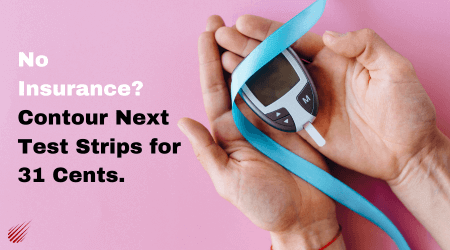
Diabetic Test Strips: Why They’re So Expensive and How to Save
Table of Contents
- Why Are Diabetic Test Strips So Expensive?
- Current Top Explanations Why Test Strips Are Pricey
- Key Takeaways: Understanding the High Cost of Diabetic Test Strips
- 1. Test Strip Manufacturing, Research & Development Costs: Understanding the Complexity
- 2. Middlemen Between You & Your Diabetic Test Strips
- 3. Blood Glucose Meter / Test Strip Brand
- A Final Thought: Diabetic Test Strip Box Type Matters (a Lot)
- About xeteor.com
- FAQs
Why Are Diabetic Test Strips So Expensive?
Why are diabetic test strips so expensive? It's a question that millions of people managing diabetes ask daily. Diabetic test strips are essential tools for monitoring blood sugar, helping patients make informed decisions about food, exercise, and medication. Accurate testing can prevent both short-term complications and long-term damage, making these strips a cornerstone of diabetes care.
Unfortunately, the high cost of diabetic test strips creates a serious barrier—especially for those without insurance or with high-deductible plans. Paying full price out-of-pocket can make consistent testing unaffordable, increasing health risks and overall medical costs.
This article explores the real reasons behind the rising cost of diabetic test strips, from manufacturing and R&D to insurance markups and brand monopolies. Our goal is to help you understand what drives these prices—and how you can find more affordable, reliable alternatives.
 Current Top Explanations Why Test Strips Are Pricey
Current Top Explanations Why Test Strips Are Pricey
When searching for "Why are diabetic test strips so expensive?" online, several explanations pop up. These perspectives, while shedding light on certain aspects of the pricing dilemma, often miss the broader complexity of the issue. Here, we explore the top explanations offered by leading sources and delve deeper into what truly drives the cost of diabetic test strips.
1. Negotiations Between Manufacturers and Insurers
According to the New York Times, “The costliness of diabetic test strips is attributed to behind-the-scenes negotiations between manufacturers and insurers, resulting in inflated sticker prices for uninsured individuals and those with high deductibles.” This highlights the impact of healthcare supply chain dynamics on the retail pricing of test strips, a critical factor often overlooked by consumers.
2. Research and Development Costs
The Auburn Examiner sheds light on another dimension, stating, “A diabetes test strip can easily cost more than $2 a strip, something that large companies say is due to the amount of research they have to do for enhancing their product.” This explanation emphasizes the high costs associated with developing and improving these essential medical supplies.
3. Complicated Negotiations
Beyond Type 1 points out, “This is because of complicated negotiations health insurance companies, pharmacy benefit managers, and manufacturers do every year.” It underscores the complexity of the agreements that ultimately influence the final price consumers pay for test strips.
Beyond the Surface: True Cost Drivers of Diabetic Test Strips
While the above explanations are technically true and provide insight into some of the factors affecting prices, they only scratch the surface of a much more complex picture. The diabetic test strip market is influenced by a myriad of factors, including but not limited to manufacturing costs, regulatory requirements, and market dynamics like supply and demand.
- Manufacturing, Research, and Development: Beyond the initial explanations, it’s important to consider the continuous investment in innovation and quality control to meet regulatory standards and ensure patient safety.
- The Role of Middlemen: The chain from production to patient involves numerous entities, each adding to the cost. Understanding their roles helps illuminate why reducing prices isn’t straightforward.
- Brand Influence and Market Competition: The choice of brand and the level of competition within the market also play significant roles in determining prices. How companies position their products and negotiate with retailers and insurers can lead to significant price variations.
By considering these additional layers, we can begin to appreciate the full scope of why diabetic test strips are so expensive and explore more nuanced solutions to address this challenge.
Key Takeaways: Understanding the High Cost of Diabetic Test Strips
When exploring the question, "Why are diabetic test strips so expensive?", it’s essential to consider the following critical factors that contribute to their high cost:
1. Manufacturing and Development Costs
The process of creating diabetic test strips involves intricate research and development, alongside sophisticated manufacturing techniques. This includes not only the production of the strips themselves but also the technology within blood glucose meters that read these strips—contributing significantly to the overall cost.
2. Complex Supply Chain
A variety of middlemen, including pharmacies, health insurance companies, and Pharmacy Benefit Managers (PBMs), play a role in the distribution and pricing of diabetic test strips. Each layer of this supply chain adds additional costs—from logistics and handling to profit margins—which are then passed on to the consumer.
3. Brand and Market Dynamics
The brand of blood glucose meter and test strips you choose can also impact the price significantly. Brand recognition, marketing strategies, and the competitive landscape within the market influence pricing, with some brands commanding a premium due to perceived quality or market dominance.
By understanding these key factors, readers can gain insight into the complexities behind the pricing of diabetic test strips and why these essential tools for managing diabetes come with a high price tag. This knowledge not only sheds light on the economic and market dynamics at play but also empowers individuals to make informed decisions when selecting diabetes management supplies.

1. Test Strip Manufacturing, Research & Development Costs: Understanding the Complexity
The Evolution of Diabetic Test Strips: A Journey of Innovation
- Early Beginnings: Before the 1960s, managing diabetes was primarily dependent on less accurate urine tests, which could only indicate glucose levels after they had surpassed a certain threshold. This method was not only indirect but also significantly delayed.
- Introduction of Blood Glucose Monitoring (1960s): The innovation of glucose oxidase-based paper strips was a groundbreaking development. For the first time, individuals could directly measure blood glucose levels with a simple color change test, although this method introduced subjectivity in interpreting results.
- Digital Integration (1970s–1980s): The advent of electronic glucose meters, capable of reading these color changes on the test strips, marked a significant leap forward. Early devices like the Ames Reflectance Meter began to eliminate the guesswork, providing a digital readout of glucose levels for more precise management.
- Technological Advancements (1980s–1990s): This era saw test strips and meters become more user-friendly, requiring smaller blood samples and delivering quicker results. Innovations included strips that utilized capillary action to automatically draw in the correct amount of blood, simplifying the testing process.
- Continuous Glucose Monitoring (CGM) (2000s–Present): CGM systems have transformed glucose monitoring by providing continuous, real-time glucose readings without the need for regular fingerstick samples, representing the forefront of diabetes management technology.
The Intricacies of Manufacturing Diabetic Test Strips
Manufacturing diabetic test strips is a process that marries intricate biochemistry with advanced engineering. Here's a closer look:
- Substrate Preparation: The journey begins with selecting a durable plastic material as the substrate, which is then coated with a conductive layer of gold or palladium alloy. This meticulous process ensures the strip can accurately convey the electrical signal generated during the glucose reaction.
- Application of Reagents: Critical to the strip's functionality are the enzymes (like glucose oxidase or dehydrogenase) that react with glucose, alongside mediators that transfer electrons to enhance measurement accuracy. The precise deposition of these chemicals is fundamental to the strip's reliability.
- Drying, Cutting, and Assembly: Following the chemical application, strips undergo controlled drying, precise cutting into individual pieces, and assembly within a plastic casing designed for easy insertion into glucose meters. Each step is crucial for ensuring the final product's accuracy and ease of use.
- Calibration and Quality Control: Before reaching consumers, each batch of test strips is rigorously tested and calibrated. This quality control process is vital for ensuring that patients can rely on their test strips for accurate glucose monitoring, a critical component of diabetes management.
- Packaging and Distribution: Finally, the strips are packaged in moisture-protective containers and distributed to pharmacies and hospitals. The packaging includes desiccants to protect the integrity of the strips, ensuring they remain effective until they reach the end-user.
Why It Matters
The history and manufacturing of diabetic test strips reveal a relentless pursuit of accuracy, convenience, and reliability in diabetes management. From the early days of color-changing paper to the latest CGM technology, each advancement reflects a commitment to improving the lives of those with diabetes. This ongoing research and development, coupled with the complex manufacturing process, contribute significantly to the cost of diabetic test strips. Understanding these efforts helps to appreciate not just the price but the value they bring to diabetes care.
2. Middlemen Between You & Your Diabetic Test Strips
Diabetic test strips may cost just 15 cents to manufacture, yet they often retail for over a dollar per strip. Why? The answer lies in a complex web of middlemen—including manufacturers, wholesalers, pharmacies, PBMs (Pharmacy Benefit Managers), insurers, and Medicare—all adding layers of cost before the strips reach the patient.
Profit Margin Breakdown: Walgreens vs. Amazon
To illustrate this markup, let’s compare the retail prices and estimated profit margins at Walgreens and Amazon based on public listings:
Walgreens Pricing

| Test Strip | Price | Per Strip | Profit Margin |
|---|---|---|---|
| Abbott FreeStyle Lite | $99.99 | $2.00 | 92.5% |
| OneTouch Verio | $16.99 | $0.57 | 73.7% |
| Accu-Chek Guide | $55.99 | $0.56 | 73.2% |
| Ascensia Contour Next | $35.99 | $0.51 | 60.5% |
| True Metrix | $18.99 | $0.32 | 53.1% |
| CareSens N | NA | NA | NA |
At Walgreens, average profit margins hover around 70.4%, with FreeStyle Lite hitting an astonishing 92.5% markup.
Amazon Pricing
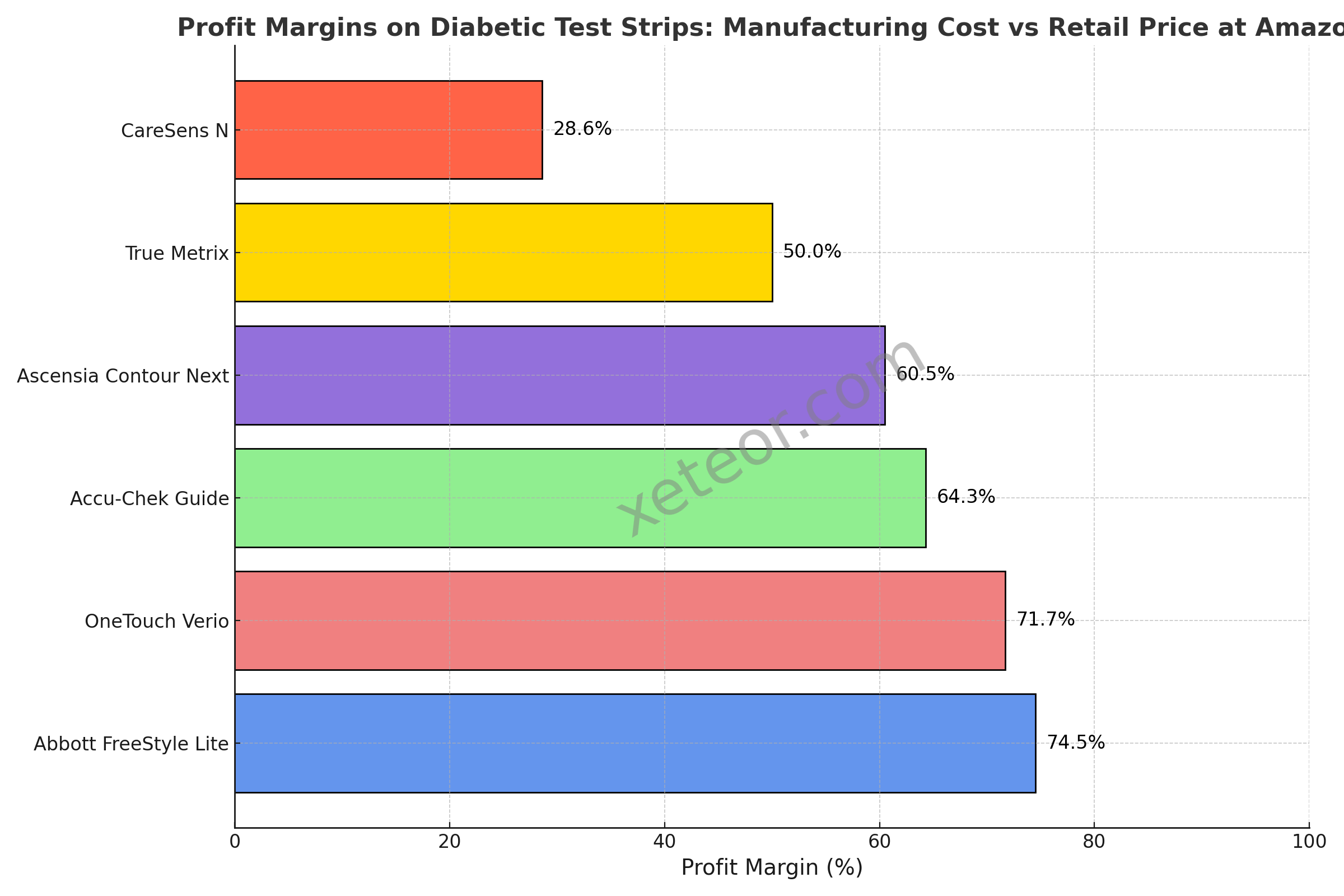
| Test Strip | Price | Per Strip | Profit Margin |
|---|---|---|---|
| Abbott FreeStyle Lite | $29.73 | $0.59 | 74.5% |
| OneTouch Verio | $94.99 | $0.53 | 71.7% |
| Accu-Chek Guide | $41.49 | $0.42 | 64.3% |
| Ascensia Contour Next | $26.58 | $0.38 | 60.5% |
| True Metrix | $30.00 | $0.30 | 50.0% |
| CareSens N | $63.74 | $0.21 | 28.6% |
Amazon's margins are slightly lower, averaging 58.3%, but still reflect substantial markups—especially for name-brand products.
Who Gets the Profit?
It’s not just manufacturers profiting. Here’s a simplified breakdown of who takes a share of each dollar spent on diabetic test strips:
- Manufacturer – 15%
- Wholesaler – 10%
- Pharmacy Benefit Manager (PBM) – 20%
- Health Insurance – 25%
- Retailer – 30%
Visualizing the Markup

CareSens N: The Outlier
CareSens N Test Strips stand out with a significantly lower margin (28.6%). Why? They are typically sold without insurance or PBM involvement—eliminating costly intermediaries. That makes them a more affordable option, especially for uninsured individuals paying out-of-pocket.
Why It Matters
Understanding these hidden layers in the test strip supply chain gives patients better insight into pricing and alternatives. Whether you shop through a retail pharmacy or online, knowing where your money goes helps you make more informed choices—and potentially save significantly on essential diabetes supplies.
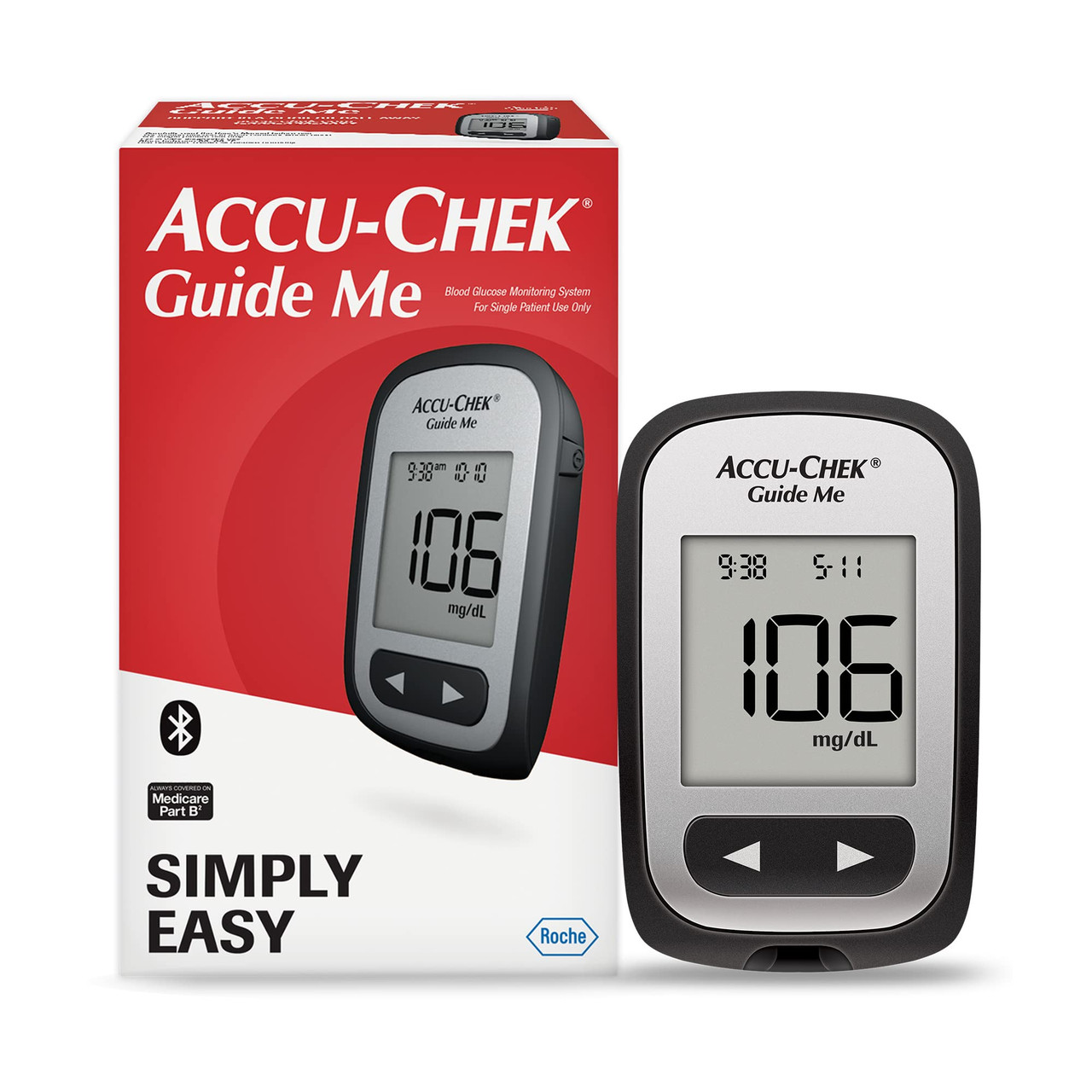 VS
VS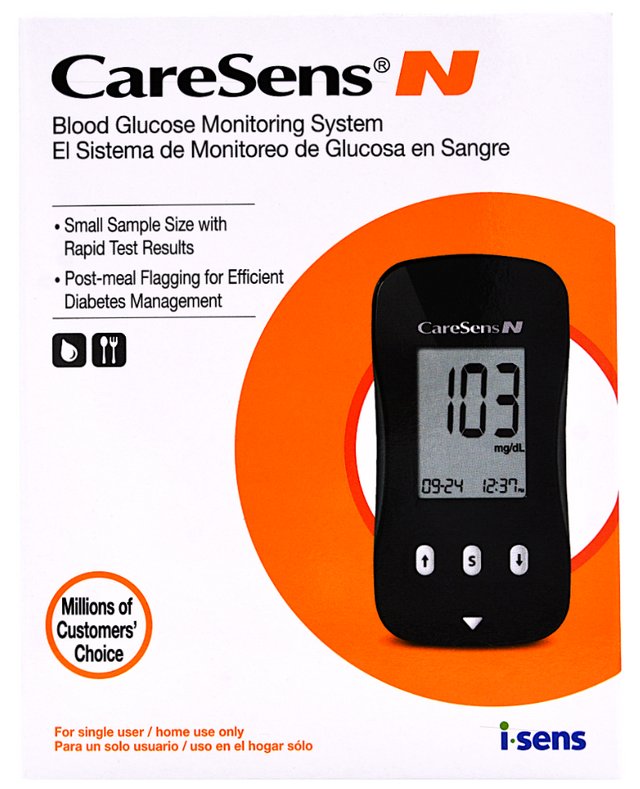
3. Blood Glucose Meter / Test Strip Brand
No factor influences your cost of test strips more than the brand you choose. Top brands like Abbott FreeStyle Lite, Ascensia Contour Next, OneTouch Verio, and Accu-Chek Guide are widely used—but they come at a premium. While these strips are often covered by insurance or Medicare, they can be painfully expensive for those paying out of pocket.
In fact, many of these companies restrict their supply chain to major retailers like Walgreens, CVS, Amazon, and Walmart—limiting competition and keeping prices high. They rarely supply independent pharmacies or small online stores, and some even restrict listings on eBay or third-party marketplaces.
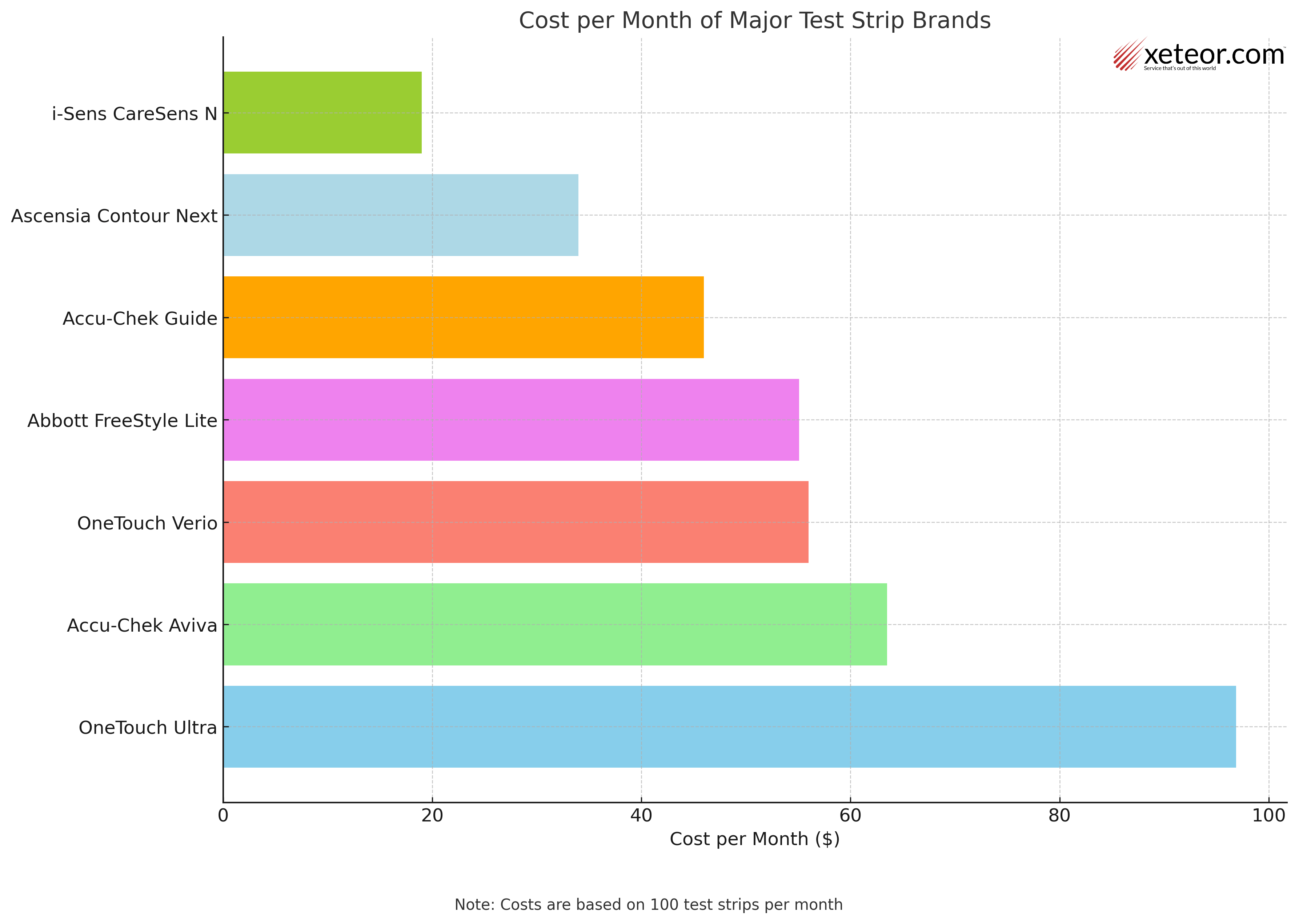
How Much Can You Save by Switching?
In November 2023, we calculated how much users could save by switching from name-brand test strips to CareSens N. For people without insurance or those on high-deductible plans, the yearly savings are massive—up to $1,000 per year.
Discount Test Strips Prices - November 2023
| Brand | Cost / Month | Cost / Year | Annual Savings |
|---|---|---|---|
| OneTouch Ultra | $96.88 | $1,162.56 | $934.80 |
| Accu-Chek Aviva | $63.49 | $761.88 | $534.12 |
| OneTouch Verio | $55.98 | $671.76 | $444.00 |
| Abbott FreeStyle Lite | $55.08 | $660.96 | $433.20 |
| Accu-Chek Guide | $45.99 | $551.88 | $324.12 |
| Ascensia Contour Next | $33.98 | $407.76 | $180.00 |
| i-Sens CareSens N | $18.98 | $227.76 | Baseline |
What If You Have Health Insurance?
If your test strips are covered by insurance, you’ll likely use whatever brand your plan requires—often Accu-Chek Guide, OneTouch Verio, or Ascensia Contour Next. You’ll just pay the copay, but plan costs vary, so check with your provider.
Medicare Coverage
Medicare does cover diabetic test strips. Here’s the official guidance from CMS: Medicare Coverage of Diabetes Supplies.
- If you use insulin: up to 300 test strips every 3 months
- If you don't use insulin: up to 100 strips every 3 months
More details are also available in our guide: Does Medicare Cover Diabetic Test Strips?
What If You Don’t Have Insurance?
If you're paying out of pocket, switching to a discount brand like CareSens N or True Metrix could dramatically lower your monthly cost—without sacrificing accuracy. These brands offer the best diabetic test strips for uninsured patients looking to control diabetes without overpaying.
A Final Thought: Diabetic Test Strip Box Type Matters (a Lot)
We’ve covered the influence of middlemen like wholesalers, insurers, PBMs, and retailers—but did you know manufacturers themselves also play a role in keeping prices high? Many brands produce multiple box types for the exact same test strips, creating confusion and limiting transparency. This practice allows them to inflate retail prices depending on where and how you buy.
Take Ascensia Contour Next as an example. While they advertise pricing that may be lower than your insurance co-pay, uninsured consumers often end up paying more simply because they’re buying the wrong box size.
By choosing the 50-count box from an independent retailer like xeteor instead of the 70-count box sold by Amazon and Walmart, you can save up to 18.4%. Same test strips. Different packaging. Lower price.
18.4% Savings on Ascensia Contour Next Test Strips
70-Count Box (Amazon/Walmart) vs 50-Count Box (Xeteor)
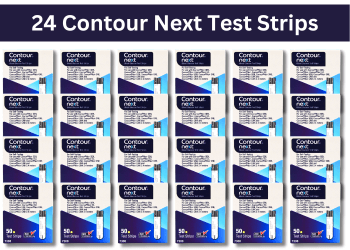
| 24 Boxes | Amazon | Walmart | Xeteor |
| Strips | 1,680 | 1,680 | 1,200 |
| Price | $637.92 | $637.92 | $371.76 |
| Cost per Strip | $0.38 | $0.38 | $0.31 |
| Shipping | Free | Free | Free |
| Membership | $14.99 | Free | Free |
| Delivery Time | 2 days | 2 – 5 days | 2 – 3 days |
| Sales Tax | Yes | Yes | NV Only |
| Returns | 30 days | 90 days | 100 days |
As we’ve explored throughout this guide, the high cost of diabetic test strips is not due to a single factor—it’s the result of a complex web of manufacturing investments, layered distribution systems, brand dominance, and opaque pricing strategies. Each step along the supply chain adds markup, making it harder for uninsured or underinsured patients to afford this critical tool for diabetes care.
Major brands like OneTouch, Accu-Chek, Abbott, and Ascensia charge premium prices not just because of quality, but because they control availability, restrict competition, and negotiate powerful insurance contracts. But options like True Metrix and CareSens show that quality test strips can be affordable—especially when you cut out middlemen.
When you understand these dynamics, you can make smarter choices: compare box sizes, question brand loyalty, and explore cost-saving options like those offered at Xeteor. Informed decisions don’t just save money—they ensure consistent access to supplies that are essential for long-term health.
Ultimately, the pricing of diabetic test strips reflects broader issues in the healthcare supply chain. But by staying informed and pushing for greater transparency, we can help reshape the system to better serve patients—not just profits.
About xeteor.com
xeteor.com, started in 2018 is based in Las Vegas, Nevada and is online pharmacy focusing on discount over-the-counter generic medications and diabetic test strips. We find deals normally reserved for "big pharma" and offer them to the consumer at discount prices. Ranking as the #1 authorized online reseller of Rugby Laboratories products according to Trustpilot.com, xeteor.com has 8,000+ 5-star reviews online, including Amazon, eBay, Trustpilot, and Google. xeteor.com is a Google Top Quality Store, earned by merchants that provide a great shopping experience.
Shipping Time & Cost
All items ship same day when purchased by 3 pm PST Monday - Friday. We offer free shipping nationwide on orders over $30 and savings packs. Shipping times are between 3 to 8 business days, with an average of 3.3 business days. A link to our full shipping policy is here.
Payment Options
We offer multiple convenient payment options, including Visa, Mastercard, Discover, American Express, Google Pay, Apple Pay, PayPal and Venmo.
Return Policy
We offer a 100% satisfaction guarantee. If you are not satisfied with the product, you may return it up to 100 days from the date of purchase. We offer free return shipping to ensure you can try the product risk free. A link to our full return policy is here.
How to Reach Us?
If you have questions about the product or need assistance, we are happy to talk on the phone. Call us at 1-833-787-4777 between 9 am - 5 pm PST Monday - Friday. You can also email us at [email protected] or text us at 702-659-7022. A link to our full contact us page is here.
Disclaimer: This post is intended for informational purposes only. It is not a substitute for professional medical advice, diagnosis, or treatment. Always consult your doctor or another qualified health provider with any questions you may have regarding a medical condition or before starting any new treatment. Do not disregard professional medical advice or delay in seeking it because of something you have read in this post.
FAQs
Why are diabetic test strips so expensive?
Diabetic test strips are expensive due to high research and development costs, complex manufacturing processes, brand influence, and a multi-layered supply chain involving insurance companies, wholesalers, and pharmacies—all of which add markups.
Are name-brand test strips better than generic options?
Not always. While name brands like OneTouch or Accu-Chek are widely trusted, generic brands like CareSens or True Metrix offer similar accuracy at a much lower price, especially for uninsured patients.
Do different box types of the same test strips affect the price?
Yes. Some brands sell identical test strips in boxes of different quantities or with different labels, and prices can vary significantly. For example, Ascensia Contour Next 50-count boxes are often cheaper per strip than 70-count boxes sold on Amazon or Walmart.
Can I get diabetic test strips through Medicare?
Yes. Medicare Part B may cover up to 300 test strips every 3 months for insulin users, or up to 100 strips for non-insulin users. Coverage depends on your medical needs and whether your provider accepts Medicare.
How can I save money on test strips without insurance?
You can save by switching to affordable brands like CareSens N, buying in bulk, avoiding big retail markups, and purchasing from trusted online pharmacies that offer better deals than traditional retailers.
What’s the difference between 7308, 7309, and 7311 boxes of Contour Next strips?
These are essentially the same strips, but packaged differently for retail, insurance, or Medicare channels. The 7311 box is the current retail version, while 7308 and 7309 were used for insurance and Medicare billing.



